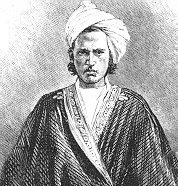Somalia
File:Somalian national anthem, performed by the United States Navy Band.oga
Somalia is a country located in the Horn of Africa. It is bordered by Ethiopia to the west, Djibouti to the northwest, the Gulf of Aden to the north, the Indian Ocean to the east, and Kenya to the southwest. With a land area of approximately 637,657 square kilometers, Somalia is the 42nd largest country in the world. Its capital and largest city is Mogadishu.
History[edit | edit source]
The history of Somalia is a rich and complex narrative that spans thousands of years. It includes the ancient Land of Punt, known for its trade with ancient Egypt, and the medieval Sultanate of Adal, which played a significant role in the Horn of Africa's history. In the late 19th century, Somalia was colonized by European powers, with Britain and Italy being the primary colonizers. The country gained independence in 1960, merging the former British Somaliland and Italian Somaliland to form the Somali Republic.
Geography[edit | edit source]
Somalia's geography is characterized by a hot, arid climate in the interior and more moderate weather along the coast. The northern part of the country features the rugged mountains of the Cal Madow and Ogo ranges, while the south and central parts are predominantly flat or gently rolling plains. The Jubba and Shabelle rivers are significant water sources, supporting agriculture in the regions they flow through.
Politics[edit | edit source]
Somalia is a federal parliamentary republic. Its political landscape has been marked by instability and conflict since the late 20th century, including a long-standing civil war, the emergence of the Islamist militant group Al-Shabaab, and issues related to piracy off its coast. The Federal Government of Somalia, established in 2012, has been working towards stabilizing the country, improving security, and rebuilding institutions.
Economy[edit | edit source]
The economy of Somalia is largely based on agriculture, livestock, fishing, and remittances from Somalis living abroad. Despite the challenges of political instability and natural disasters, the country has maintained an informal economy, with livestock being the largest sector. The telecommunications and mobile money sectors have also seen significant growth.
Culture[edit | edit source]
Somalia's culture is a blend of traditional Somali customs with influences from Arab, Persian, and Indian traders who have interacted with the Somali people over the centuries. The Somali language is the most widely spoken language, and Islam is the predominant religion. Poetry, storytelling, and music are integral parts of Somali culture, reflecting the country's rich oral tradition.
Demographics[edit | edit source]
The population of Somalia is predominantly ethnic Somalis, who have historically been divided into clan families. These clans play a significant role in Somali society and politics. Other minority groups include Bantu and Arabs. Somali and Arabic are the official languages, with Somali being the most commonly used for daily communication.
Challenges[edit | edit source]
Somalia faces numerous challenges, including political instability, security issues, poverty, and environmental concerns like droughts and desertification. Efforts by the federal government and international community aim to address these issues, but progress is often slow and uneven.
Navigation: Wellness - Encyclopedia - Health topics - Disease Index - Drugs - World Directory - Gray's Anatomy - Keto diet - Recipes
Search WikiMD
Ad.Tired of being Overweight? Try W8MD's physician weight loss program.
Semaglutide (Ozempic / Wegovy and Tirzepatide (Mounjaro) available.
Advertise on WikiMD
WikiMD is not a substitute for professional medical advice. See full disclaimer.
Credits:Most images are courtesy of Wikimedia commons, and templates Wikipedia, licensed under CC BY SA or similar.
Contributors: Prab R. Tumpati, MD





